Properties of radio waves, basic terms and frequency ranges
Waves are the propagation of vibrations in space. They can be mechanical and electromagnetic. We are interested in the latter, since radio waves have an electromagnetic nature.
Spectrum is a set of values of any magnitude, for example, a set of all intensity values for any wavelengths and frequencies of electromagnetic radiation.
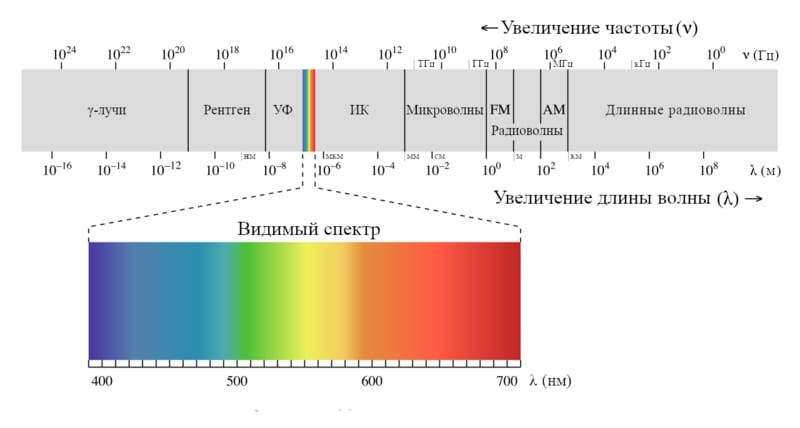
The existence of electromagnetic waves as a whole was proved in 1888 by the German physicist Heinrich Hertz, confirming Maxwell's electromagnetic theory of light. He investigated in detail and described how electromagnetic waves are affected by reflection, interference, diffraction and polarization, proved that their propagation speed is equal to that of light, and also that the energy of the electromagnetic field can be transmitted wirelessly. Without attaching much importance to his discovery, he believed that this discovery was nothing more than a confirmation of Maxwell's theory.
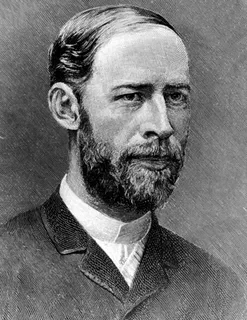
Heinrich Rudolf Hertz (1857. — 1894)
For us, this means that the terms applied to light also apply to radio waves:
Absorption is the ability of a wave to pass through matter with a subsequent decrease in power.
Under normal conditions, the flashlight shines well, if you cover it with a rag, the brightness will decrease significantly. Moreover, the denser and thicker the material, the more the light is decreased.
The shorter the wave (higher frequency), the stronger the quenching, and accordingly the longer the wave (lower frequency), the less the quenching. Roughly speaking, if the wave is 14 cm, then it will not break through a meter-thick hill, if the wave is 10 meters, then it wont feel the resistance of the hill and it will break through and go on as if nothing had happened. Why is this happening and how to explain it? Well, you can imagine how much effort a 14-centimeter wave will spend, making zigzags in the thickness of the ground: very soon the frisky wave will lose all drive and fade away, while a 10-meter cuttlefish wave will barely make a quarter of an oscillation inside the hill; that is, there will be less path there, respectively, there will be less resistance on the way. The same can be imagined with the travel of waves in a gaseous medium: if you zigzag back and forth, then there is a greater chance of running into a bunch of gas molecules, which will subsequently harm the propagation.
The denser the material, the more particles there are per unit of space, the more difficult it is to “pass”.
Scattering is the propagation in the medium.
If there are no barriers preventing the spread, then the rays from the glowing bulb are distributed throughout the room, they[rays] do not form a single dot on the ground opposite to them. It is possible to get a focused beam of light, but it is useless in terms of lighting; plus, if the luminous flux is sufficient and it is focused, then there is a chance to burn through your favorite floor covering.
If you have an antenna in the form of a stick sticking out into the sky, then you will cover a decent area around you. Yes, you will be able to hear a lot of radio broadcasts, but their quality will vary depending on external factors. If you have an antenna in the form of a gun or a dish, then all the power will be focused in a specific direction. Yes, the clarity of transmission and reception will be excellent, but in this way you isolate yourself from other sources of information.
Reflection is a change in the trajectory of wave propagation in contact with the surface of the material.
Shine a flashlight on a mirror or a well-polished piece of metal: if you shine it at a right angle (that is, perpendicular to the reflecting surface) then the light will be reflected back into the flashlight; if you shine at an angle of 90 °, the light will be reflected and fly further.
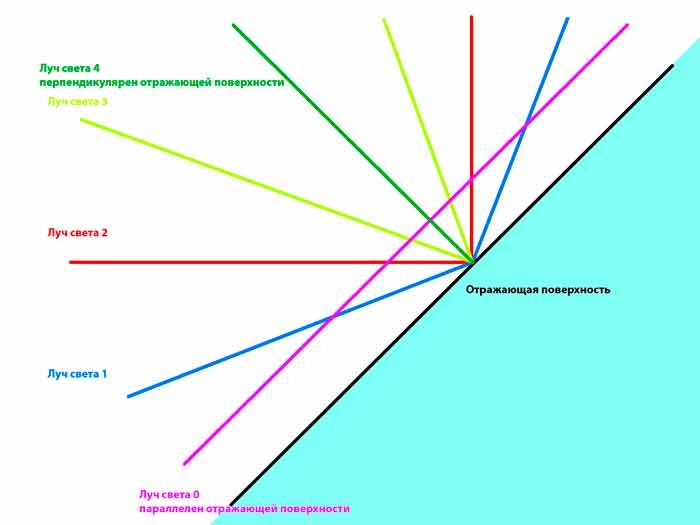
With EMV everything remains the same, for radio waves, the ionosphere is the main reflector. But I would like to add that they are reflected from metals, that's why there are special waveguides. And that is also why, before various diagnostics, people are asked to take off all metal jewelry.
Interference is the superposition of two or more waves on each other, a change (decrease or increase) in the amplitude of the final wave depending on the amplitude of the forming waves.
A good example would be the layering of sound waves. If the waves have the same polarity, then their potentials add up; if the polarity is different, then the waves are in opposite phase(what's called "out of phase") and they are subtracted to the point when they are completely extinguished.
Electromagnetic waves (EMW) will also add up if in phase and subtract if out of phase.
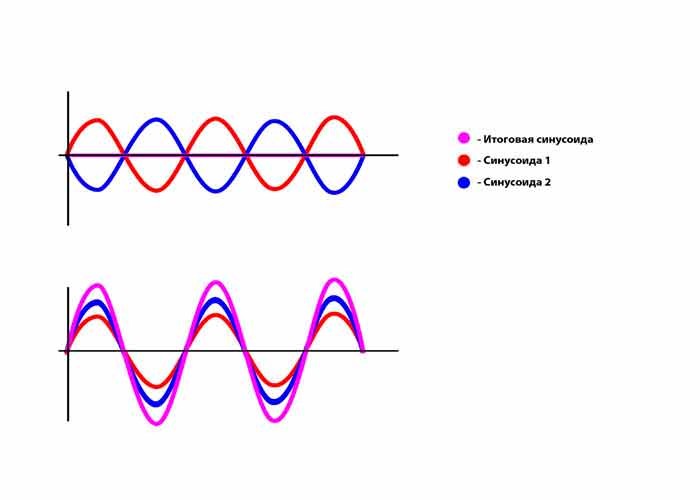
Polarization is a filtering phenomenon. Something passes, something is reflected.
An example of polarization is… Glasses with colored lenses! When you wear pink-colored glasses (excuse the pun) the world is losing blue, green and yellow colors for you: there is pink and its different shades. Also an example of filtering is a chameleon mask for welders and polarizing glasses for fishermen and athletes. Both devices have one purpose — to protect the user's eyes from harmful UV radiation emanating from metal welding and the glow of the Sun by damping waves with certain characteristics.
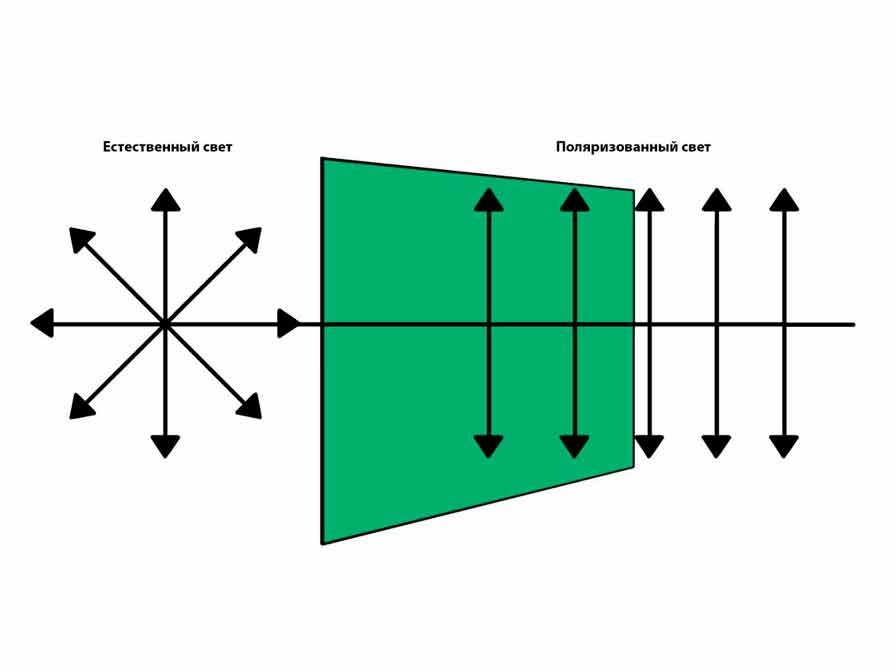
In radio when we talk about polarization, we mean the position of the antenna, because the pattern of propagation of radio waves in space depends on it. If you was fiddling with the antenna you could have noticed that in one position the reception is sound and well, and in the other — dead silent. So: when the antenna “looks” in the right direction, it picks up more wave from the transmitting station: the more, the better the intelligibility of the information. If the antenna at the transmitter is horizontal and the receiver is vertical, then the area of contact with the wave of the desired polarity will be so insignificant that you will hear noise and not music or news.*
*Does not apply to gun aka directed antennas
Diffraction is the ability of a wave to overcome an obstacle without changing the propagation medium.
One example is shadow theater: a hand in front of a light source. The light bends around the hand and the output is a spot of light with a shadow from the hand. Also, depending on how far the hand is from the light source, the darkened zone changes — the closer the shadow is to the object, the less light bends around the hand and as a result, the shadow has more pronounced edges. Another example is a dark room with a small hole in the wall on the other side of which there is a light source, the greater the distance between the walls of the room, the more illuminated the opposite wall will be.
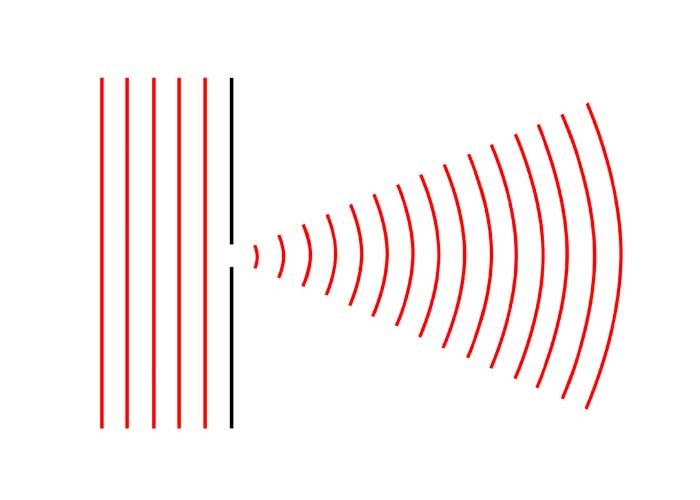
An example from VHF: transmission is possible in the field of view; two amateur radio operators talk, one of them begins to go behind a conditional obstacle (a tree, a reinforced concrete structure, a hill) and at one point the connection is interrupted. Why is that? Well, one of the operators disappeared from view: the waves are blocked by an obstacle and cannot reach the receiving side.
Refraction is a change in the trajectory of a wave during a change of medium.
If you point a flashlight at the lens at different angles, the light will change its direction. No lens? A bag or a glass of water are tolerable analogues of a laboratory colleague.
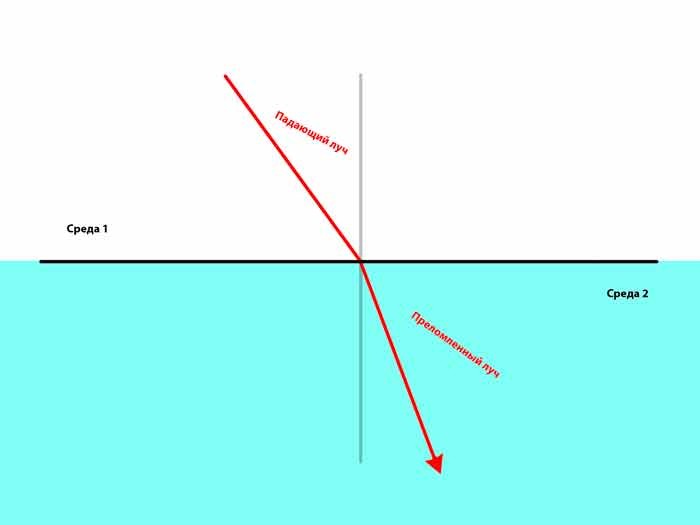
Radio waves that are not reflected by the ionosphere in it are refracted and absorbed. Here the refraction occurs due to the fact that the wave passes from a neutral medium to an ionized one.
Remember that in nature everything depends on everything and one cannot be without the other. Even if only one phenomenon is called in the examples given, this does not mean that everything is limited to this — everything happens at once, just in different proportions.
You can also imagine a river and a log: the log will go with the flow of the river; if it goes upstream or perpendicular to it, then you have some kind of wrong log or a strange river.
It is worth knowing that radio waves (like any other electromagnetic waves) have their own length, frequency and amplitude, which directly affect propagation.
The wavelength is the spatial period of the wave process, i.e. the distance between two points closest to each other in space in which the oscillations occur in the same phase.
The frequency of the wave is the number of oscillations that the wave makes per unit of time. It is inversely proportional to the period — the time for which one oscillation occurs.
Amplitude is the maximum value of the displacement or change of a variable relative to the average value.
Length and frequency are interconnected with each other. By increasing the wavelength, we decrease the frequency and vice versa, as the frequency increases, the length decreases.
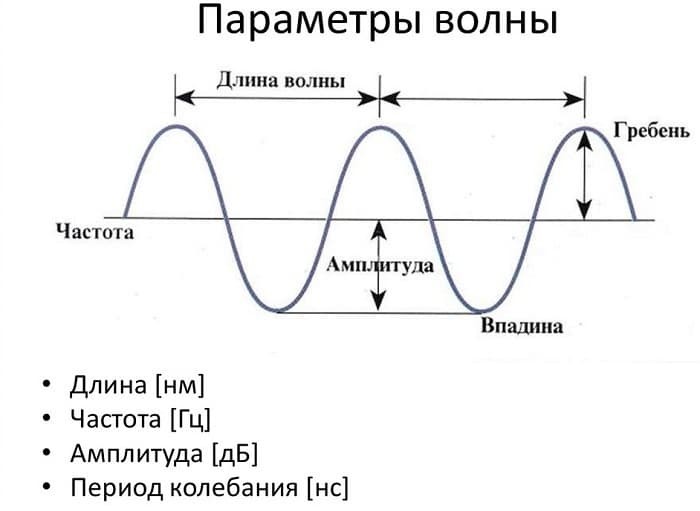
Speaking of terms, it is also worth noting the English scientist William Crookes and the case associated with him.
It so happened that some terms in the field of electromagnetic wave transmission were invented before the invention of devices capable of full-fledged transmission and reception. He did not conduct experiments in this area, but as a science fiction writer (and also, by the way, as he himself claimed, a spiritualist) allowed "contactless biological communication between people's heads" (by the way, this is a chemist and physicist who discovered the element thallium, the phenomenon of scintillation, and also revealed helium for the first time).
Already after the statements of Malone Loomis, Thomas Edison and Nikola Tesla, some of their discoveries and general progress in this field, Crookes, in his 1892 article "some possibilities for the use of electricity", used the term "radio" in a broad sense, and also for the first time used terms that later became commonly used, for example: "range", "sensitivity", "selectivity".
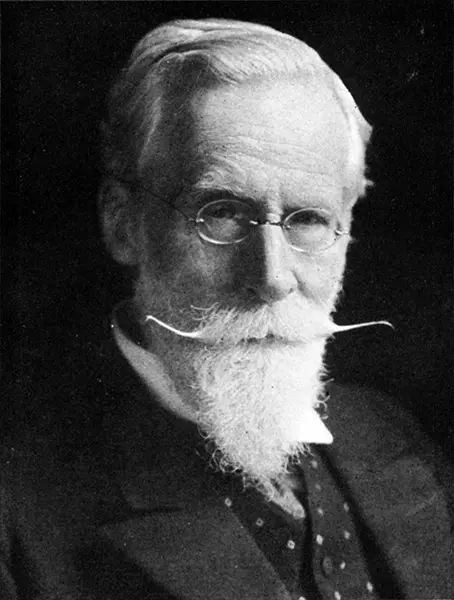
William Crookes (1832 — 1919)
Radio wave ranges
It is the radio waves that are commonly called the EMV range from 30 kHz to 3 THz, and in turn it is customary to divide it into the following ranges:
Ultra-long waves (ULW, ULF):
Extremely long radio waves with a length of over 10 km . with extremely low frequency. They are weakly absorbed by the Earth's surface and at the same time reflect very well from the ionosphere, and therefore easily bend around the entire Earth, spreading along the Earth's surface as along a waveguide, while experiencing virtually no distortion from ionospheric disturbances. They also penetrate deep into the sea water column and to some extent under the earth's surface. Due to these factors, they are used for communication with submarines (when water completely blocks any other ranges), for radiosonding and studying the layers of the atmosphere.
In general, they have very limited use. The reason for this is firstly the difficulties with the creation of antennas capable of receiving them, and secondly the extremely low speed of information transmission. For obvious reasons, they are not used in any way in amateur radio.
Among them are the ranges:
Decamegameter (100-10 Mm, 3-30 Hz)
Megameter (10-1 Mm, 30-300 Hz)
Gektokilometrovye (1-0.1 Mm, 0.3—3 kHz)
Miriameter (100-10 km, 3-30 kHz)
Long waves (LW, LF) — kilometer waves, low frequency waves (for amateur radio communications, the 135.7—137.8 kHz section is used):
Waves from 1 to 10 kilometers. Long waves of low frequency are often also used as a shift, because of similar properties, but because of the higher frequency in general, they are more versatile, because in addition they are also used for: radio navigation, and of course for communication and radio control of objects at a great distance.
Due to diffraction, surface waves propagate along the earth at distances up to about two thousand kilometers, but due to the fact that the distance between the ionosphere and the earth for them as a waveguide can circumnavigate the entire earth.
Medium waves (MW, MF) — hectometer waves (for amateur radio communication, a range of 160 m (1.8 — 2.0 MHz) is allocated:
Along with the short ones, the most common range for broadcasting is. These are waves from 100 m to 1 km, however, there are ranges allocated for amateur radio communications that are conditionally considered short-wave.
Being in the middle between long and short waves and are the gap combining their properties. The surface wave is much weaker, but it can still spread for many hundreds of kilometers, and also starting from here it becomes possible to reflect the signal from the ionosphere, although due to the lower layer of the ionosphere during the day, if possible, it is very problematic, but at night when the passage "opens" the possibilities for communication and possible distances between operators increase.
Short waves (SW) — decameter waves:
Up to 100 m from 10 m. An interesting situation has occurred with amateur radio bands. In the early years of the radio's existence, it was considered that waves below 250 m were not very suitable for practical purposes, therefore they were completely placed at the disposal of enthusiasts. In the future, with the development of technology, it turned out that by using short waves it is possible to conduct communications over long distances at low power of the transmitter. Of course, this fact could not be ignored and bands were gradually allocated in SW for use by state and other services, but a large number of strictly defined shortwave bands remained in the use of radio amateurs.
In fact, they differ somewhat from country to country. Thus, according to the "Regulations of Amateur Radio Communication of Ukraine" approved in 2011[8], unlike Russia, the 136 kHz range is not provided, the 30-meter range is set within 10.1—10.140 MHz, and the 20-meter range is 14.0—14.250 MHz, etc. In the Russian Federation, the ranges are allocated for amateur radio communication:
2,200 meters (conventionally considered short-wave)
| Frequency (kHz) | Maximum signal bandwidth (Hz) | Uses |
| 135.7 — 137.8 | 200 | CW, QRSS and narrow-band Digital types |
160 meters (conventionally considered short-wave)
| 1810-1838 | 200 | W, 1835 kHz-QRP Activity Center 1838-1840 |
| 1838 — 1840 | 500 | Narrowband types |
| 1840-1843 | 2700 | All types-Digital types |
| 1843 — 2000 | 2700 | All types |
80 meters
| 3500 — 3510 | 200 | CW, mainly for intercontinental communications |
| 3510 — 3560 | 200 | CW, mainly for competitions, 3555 kHz-activity center QRP |
| 3560 — 3570 | 200 | CW, 3560 kHz-activity center QRP |
| 3570 — 3580 | 200 | All types-Digital types |
| 3580 — 3600 | 500 | All types — Digital types |
| 3600 -3620 | 2700 | All types types-Digital types |
| 3600-3650 | 2700 | All types, mainly for SSB competitions, 3630 kHz-DV activity Center |
| 3650 — 3700 | 2700 | All types, 3690 kHz-SSB Activity Center QRP |
| 3700 — 3775 | 2700 | All types, mainly for SSB competitions, 3735 kHz-image transmission Activity Center, 3760 kHz - emergency radio activity center in the Area 1 |
| 3775 — 3800 | 2700 | All types, mainly for SSB competitions, mainly for intercontinental radio communications |
40 meters
| 7000 — 7040 | 200 | CW, 7030 kHz-QRP Activity Center |
| 7040 — 7050 | 500 | Narrowband types-Digital types |
| 7050 — 7053 | 2700 | Narrowband types — Digital types |
| 7053 — 7060 | 2700 | All types — Digital types |
| 7060 — 7100 | 2700 | All types, mainly for SSB competitions, 7070 kHz-DV activity Center, 7090 — kHz SSB QRP activity center |
| 7100 — 7130 | 2700 | All types, mainly for SSB competitions, 7110 kHz-emergency radio activity center in Area 1 |
| 7130 -7175 | 2700 | All types, mainly for SSB competitions, 7165 kHz-image transmission activity center |
| 7175 — 7200 | 2700 | All types, mainly for SSB competitions, mainly for intercontinental radio communications |
30 meters
| 10100 -10130 | 200 | CW, 10116 kHz-QRP Activity Center |
| 10130 — 10150 | 500 | Narrowband types-Digital types |
SSB transmissions are allowed to radio stations directly involved in traffic aimed at saving people's lives.
20 meters
| 14000 — 14060 | 200 | CW, mainly for competitions, 14055 kHz-activity center QRS |
| 14060 — 14070 | 200 | CW, 14060 kHz-activity center ORP |
| 14070 — 14099 | 500 | Narrow Band types-Digital types |
| 14099 — 14101 | IBP, exclusively for beacons | |
| 14101-14112 | 2700 | All types — Digital types |
| 14112 — 14 125 | 2700 | All of them types |
| 14125-14300 | 2700 | All types, mainly for SSB competitions, 14130 kHz-DV activity Center, 14195 kHz + - 5 kHz-mainly for radioexpeditions, 14230 kHz-image transmission activity Center, 14285 kHz-SSB QRP Activity Center |
| 14300 — 14350 | 2700 | All types, 14300 kHz-World Emergency activity Center radio communications |
17 meters
| 18068-18095 | 200 | CW, 18086 kHz-Activity Center |
| QRP 18095-18109 | 500 | Narrowband types-Digital types |
| 18109-18111 | IBR, exclusively for beacons |
|
| 18111-18120 | 2700 | All types — Digital types |
| 18120 — 18168 | 2700 | All Types, 18130 kHz-SSB Activity Center QRP, 18150 kHz-DV Activity Center, 18160 kHz-World Emergency Radio Activity Center |
15 meters
| 21000-21070 | 200 | CW, 21055 kHz-QRS Activity Center, 21060 kHz-QRP Activity Center |
| 21070 — 21110 | 500 | Narrowband types-Digital types |
| 21110 — 21120 | 2700 | All types except SSB, Digital types |
| 21120 — 21149 | 500 | All Types — Digital types |
| 21149 — 21151 | IBR, exclusively for beacons | |
| 21151 -21430 | 2700 | All types types, 21180 kHz-DV activity Center, 21285 kHz-SSB QRP Activity Center, 21340 kHz-Image transmission Activity Center, 21360 kHz-world emergency radio activity center |
12 meters
| 24890-24915 | 200 | CW, 24906-QRP Activity Center |
| 24915 — 24929 | 500 | Narrowband types-Digital types |
| 24929 — 24931 | IBR, exclusively for beacons | |
| 24931 — 24940 | 2700 | All types — Digital types |
| 24940 — 24990 | 2700 | All types, 24950 kHz-SSB Activity Center QRP, 24960 kHz — DV Activity Center |
10 meters
| 28000-28070 | 200 | CW, 28055 kHz-QRS Activity Center, 28060 kHz-QRP Activity Center |
| 28070-28150 | 500 | Narrowband types-Digital types |
| 28150 — 28190 | 500 | Narrowband types |
| 28190-28199 | IBP, regional time | |
| 28199-28201 | IBP, World time-sharing beacons | |
| 28201-28225 | IBP, Continuous active beacons |
|
| 28225-28300 | 2700 | All types-beacons |
| 28300-28320 | 2700 | All types-Digital types |
| 28320 — 29000 | 2700 | All types, 28330 kHz-DV, 28360 kHz-SSB QRP Activity Center, 28680 kHz-Image transmission Activity Center |
| 29000 — 29100 | 6000 | All types |
| 29100 — 29200 | 6000 | All types-FM Simplex channels in 10 kHz increments |
| 29200-29300 | 6000 | All types-Digital types |
| 29300-29510 | 6000 | Satellite communication |
| 29510-29520 | Guard interval | |
| 29520-29590 | 6000 | All Types — FM repeaters, input frequencies (RH1 — RH8) |
| 29600 | 6000 | All types — FM call channel |
| 29610 | 6000 | All types — FM operation via Simplex Repeater |
| 29620-29700 | 6000 | All types-FM repeaters, output frequencies (RH1-RH8) |
Surface waves do not propagate too far, but spatial waves can repeatedly reflect off the ionosphere and the earth's surface and propagate in such jumps can circumnavigate the entire earth several times.
Ultrashort waves (USW, VHF) :
Waves less than 10 m long. The properties are the opposite of ultra-long waves. They are very popular for use, they spread in line of sight, they bend around and pass through obstacles worse than all other ranges, they are absorbed by water as much as possible, they do not reflect from the ionosphere passing through it, and therefore repeaters (satellites in orbit, antenna towers) are needed to communicate over long distances with their help, but at the same time they have a very high frequency, and as a consequence, a large potential speed of information transfer.
Where are VHF used? Everywhere, including you. For example, television. Don't you have a TV? Mobile communication, you probably use a phone, nowadays almost everyone has one. Do you communicate by phone only via the Internet? Wireless Internet and everyone's favorite wi-fi are also ultrashort radio waves. In addition to the above, the area of their use is radar, satellite and space radio communications, radio astronomy, radiothermography (determination of the temperature of biological objects) and radio spectroscopy (determination of the structure and composition of matter). You can also mention kitchen microwave: VHF is absorbed by water as efficiently as possible. What happens to the liquid at the same time? Heating. That's how microwaves work.
Among them are the ranges:
Meter (10-1 m, 30-300 MHz)
Decimeter (1-0.1 m, 0.3—3 GHz)
Centimeter (100-10 mm, 3-30 GHz)
Millimeter (10-1 mm, 30-300 GHz)
Decimillimeter (1-0.1 mm, 0.3—3 THz)

